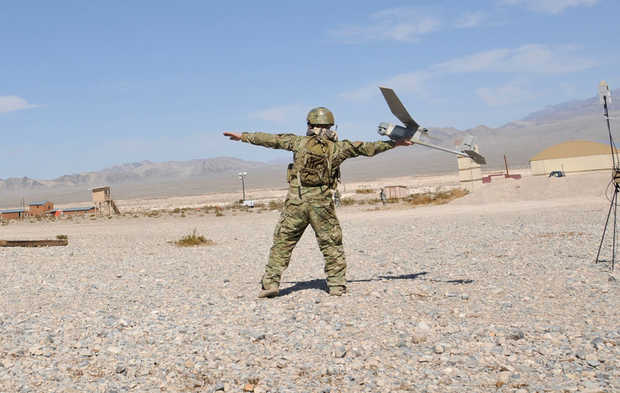 The US Air Force is funding work to let UAS tag suspects or cars with a spray that gives them a distinct spectral signature, making them easy to track.
The US Air Force is funding work to let UAS tag suspects or cars with a spray that gives them a distinct spectral signature, making them easy to track.
On a dusty road in northern Pakistan, a nondescript vehicle rounds a corner. Fifty metres overhead, a tiny UAS buzzes unseen, spraying a fine mist across the vehicle’s roof as it passes below. The vehicle is now tagged, and can be tracked from many kilometres away by an infrared scanner on a larger UAS.
This scenario may soon be played out now that Voxtel, a firm in Beaverton, Oregon, has won a US Air Force contract to develop a UAS-based tagging system. Voxtel makes tagging materials – taggants – that can be used to discreetly label vehicles carrying smuggled goods, or people who are involved in civil disobedience or attempting to cross international borders illegally.
Voxtel’s taggants are based on quantum dots – semiconductor nanocrystals less than 50 atoms across. Because of quantum effects, they absorb and emit light at specific wavelengths. The company has demonstrated a taggant powder that, when illuminated with an invisible ultraviolet laser, can be detected by infrared cameras 2 kilometres away. The powder is delivered as an aerosol that clings to metal, glass and cloth, and batches can be engineered to have distinct spectral signatures.
The nanocrystals would be sprayed by a hand-launched UAS such as the Raven. With a wingspan of less than 1.5 metres, it is quiet and has a range of several kilometres. A larger Predator could then illuminate the target with an ultraviolet laser and track its progress.
But spraying the taggant accurately can be tricky, as Kevin Jones and colleagues at the Naval Postgraduate School in Monterey, California, discovered. They experimented with small UAS that delivered a simulated taggant made from coloured sugar beads used in cake decoration. They wanted to coat a road with the stuff so that it would stick to the wheels of any vehicle that drove through.
But the wind blew the beads around as soon as they were sprayed. So Jones’s team developed software to model the effects of wind so they could allow for it when spraying. When they fed in estimates of wind speed and direction based on readings from the UAS’ sensors, the UAS could hit a target from an altitude of 45 metres.
A more advanced system would allow accurate tagging from greater distances, which would be more effective as small UAS can be inaudible when flying further than 60 metres away.
Source: New Scientist
